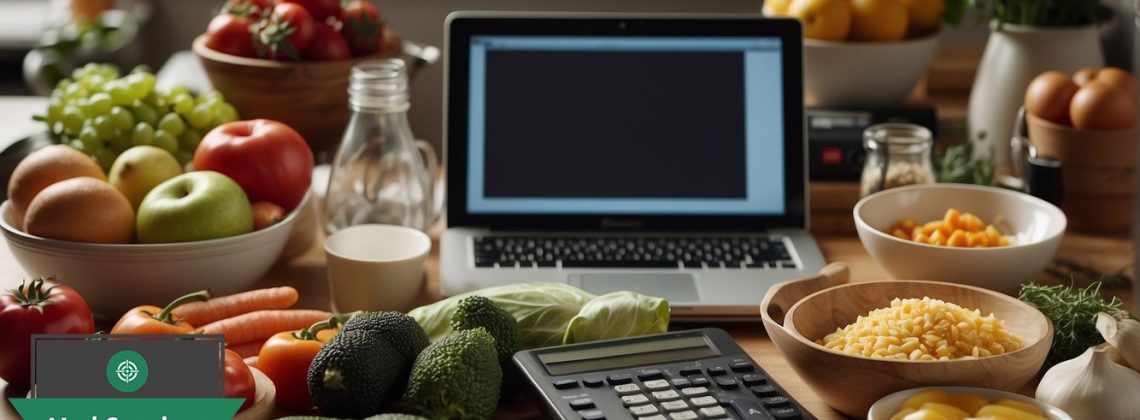
Getting prepared for emergencies doesn’t have to drain your wallet. In fact, prepping on a budget is entirely possible and can be quite efficient when you prioritize and focus on the basics. Start by identifying what you absolutely need in case of an unexpected event. Think about the essentials: food, water, shelter, and safety. These are the items that should top your list, and you can round out your emergency kit with additional items as your budget allows.
Being resourceful is key when you’re working with limited funds. Instead of buying everything at once, consider acquiring items gradually. Look for sales, use coupons, and even check out second-hand stores for gear. And don’t forget to think about what you already have at home that can be repurposed for emergency use. You might be surprised by how much you can gather without spending a cent.
Remember that prepping isn’t a one-size-fits-all process. Tailor your approach to your specific needs and your financial situation. It’s better to start small and build up your supplies over time than to not start at all. With smart planning and strategic purchases, you’ll find that prepping on a budget is not only feasible but can also give you peace of mind knowing you’re prepared for the future.
Understanding the Basics of Prepping
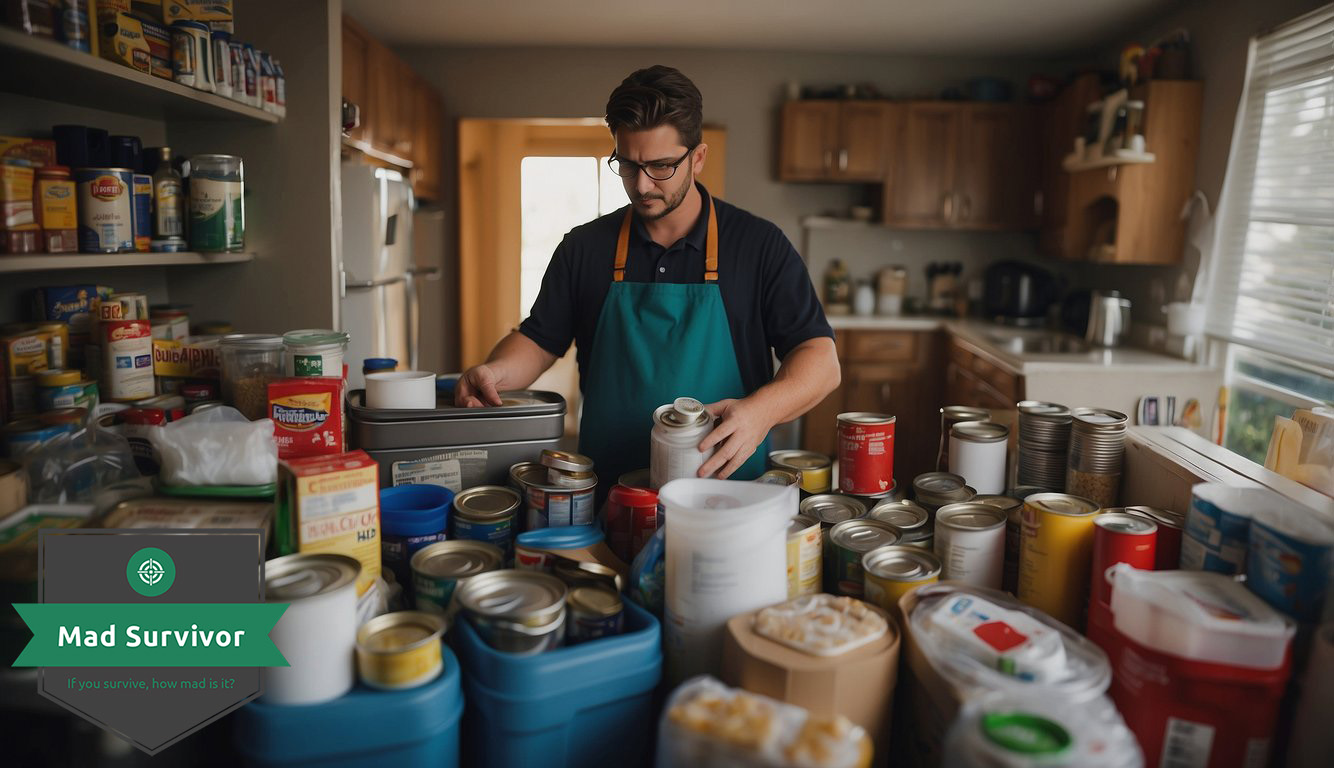
In prepping, you’re equipping yourself with the knowledge and gear for survival in various emergencies. Focusing on the fundamental skills and essential items is key.
Defining Prepping and Its Goals
Prepping, at its core, is about readiness for unexpected situations—whether natural disasters, power outages, or even societal disruptions. Your goal is to be self-sufficient, ensuring your survival and comfort when normal services and conveniences aren’t available. It encompasses a range of activities, from stockpiling essential supplies to learning survival skills. To be effective:
- Knowledge: Understand first-aid, food preservation, and navigation.
- Survival Gear: Begin with essential items like water purifiers, non-perishable food, and a reliable shelter solution.
The Importance of Starting Small
Diving into prepping can be overwhelming, but starting small makes it manageable. Don’t think you need to prepare for every possible scenario right away.
- Focus on Essentials: Prioritize items that fulfill basic needs. For instance:
- Water: A gallon per person per day is a good rule of thumb.
- Food: Opt for non-perishables like canned goods and dry staples.
- Shelter: Basic camping gear can double as emergency shelter.
- Medical Supplies: Gather a first aid kit tailored to your family’s needs.
Developing a Prepping Plan on a Budget

When you’re prepping on a budget, it’s vital to balance financial discipline with effective planning. You don’t need to spend a fortune to be prepared.
Setting Financial Priorities
First things first, grab a calculator and take a hard look at your finances. Figure out how much money you can realistically allocate to prepping without compromising your day-to-day necessities. This is about being smart with your spending, not about hoarding every piece of gear out there.
- List essentials (water, food, shelter, first aid) in order of priority.
- Allocate funds to each category based on your list, starting with the most crucial, like water.
- Look for multi-use items that can fulfill more than one need, maximizing value.
- Remember, buying in bulk can save money, but only purchase what you’ll use.
Creating a Practical Timeline
With your priorities set, it’s time to form a timeline that aligns with your budget. Prepping isn’t a race; it’s a marathon. Long-term planning helps prevent financial strain and burnout.
- Map out a monthly or quarterly spending plan.
- Assign deadlines for acquiring specific items within your budget constraints.
- Consider seasonal sales when expensive items might be discounted.
- Track your progress and re-evaluate every few months to adjust your plan as needed.
Budgeting for Food and Water
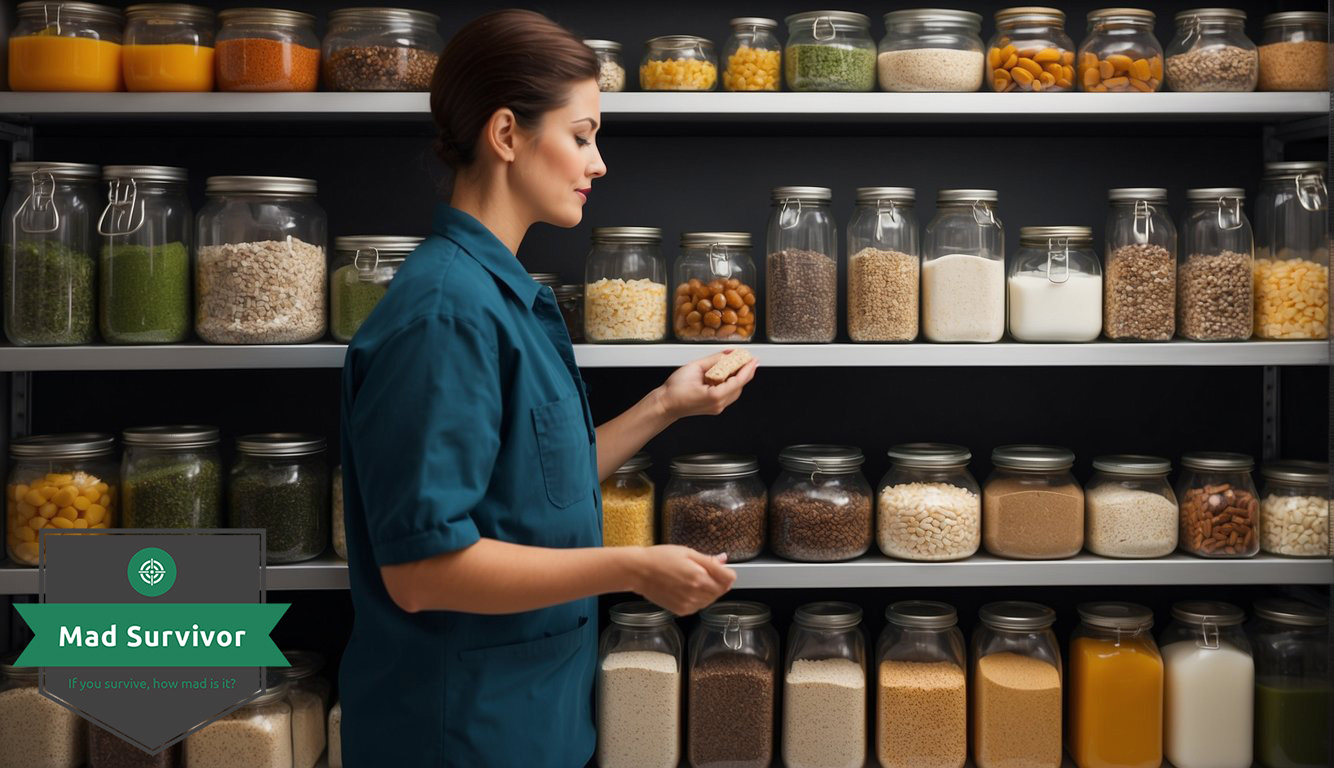
When prepping on a budget, your focus should be on items that offer high nutritional value for their cost. Both food and water are critical; you need a practical, affordable food stockpile and a secure water supply.
Essentials of a Food Stockpile
Your food stockpile ought to be balanced and nutrient-rich. Start by purchasing budget-friendly staples like rice, beans, and grains. These foods are cost-effective, have a long shelf life, and can serve as the base of many meals.
- Rice: A versatile carb with a long shelf life. Opt for white rice for longer storage.
- Beans: Full of protein, choose a variety like black, pinto, or lentils.
- Grains: Include options like oats or barley for variety and additional nutrients.
- Nuts: They’re a great source of healthy fats and protein, just watch for sales to grab them at a lower cost.
While these are your staples, you can’t ignore variety and taste—add spices, canned vegetables, and protein sources to keep meals interesting. Think tuna, powdered milk, and canned chicken; they offer necessary protein while still being affordable.
Securing a Reliable Water Supply
Water is critical—both for drinking and cooking. When prepping, ensure you have a plan for storing and purifying water.
- Bottled Water: It’s convenient for immediate use and has a stable shelf life, making it a good starting point. Store in a cool, dark place.
- Water Containers: Invest in some sturdy containers to store tap water. You’ll save over time compared to bottled water.
- Purification: Consider options like water purification tablets or filters. They’re cost-effective in the long run and vital if you need to purify water from a non-potable source.
Acquiring Budget-Friendly Prepping Gear
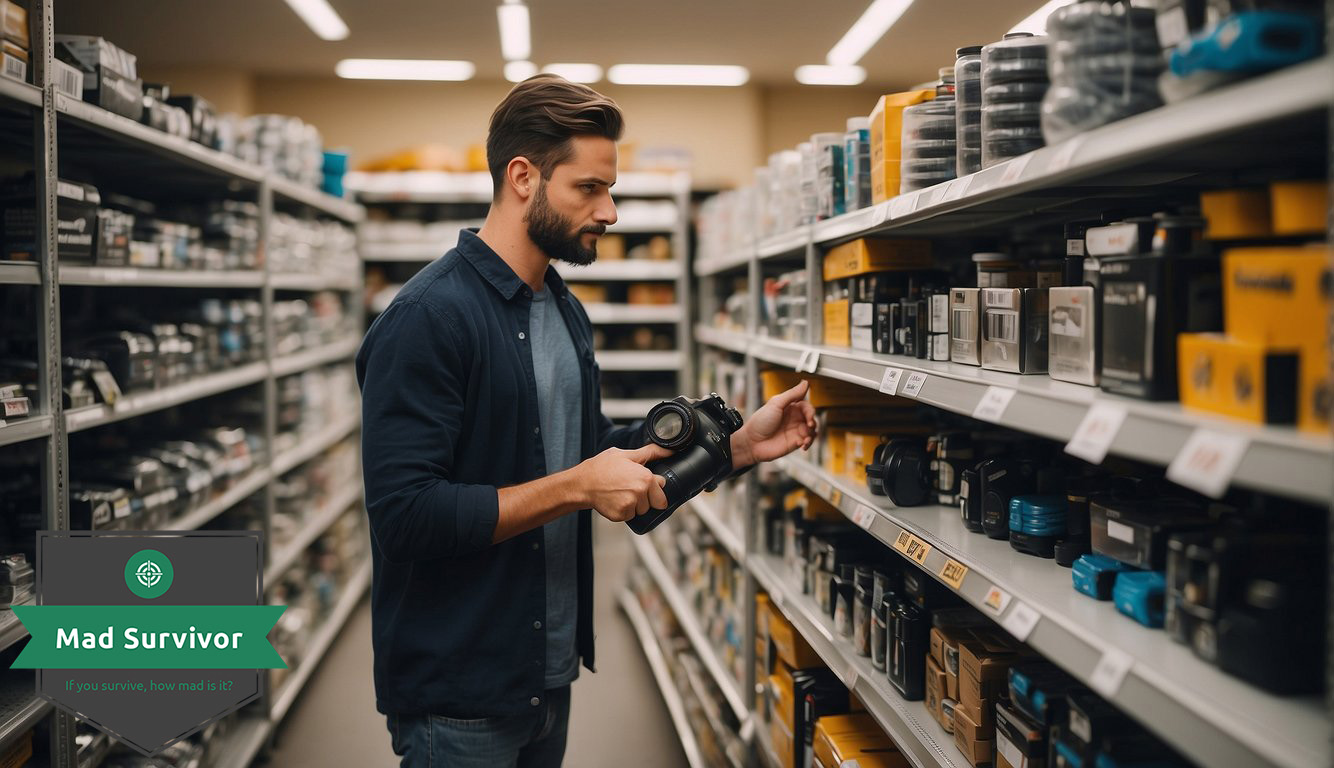
As you dive into the world of prepping, remember that gearing up doesn’t have to drain your wallet. Smart choices and a bit of DIY can stretch your budget further.
Tools and Equipment Essentials
When it comes to essential gear, focus on functionality and versatility. Your first aid kit, for instance, is non-negotiable but can be assembled piece by piece. Thrift stores and sales are your allies here, offering discounts on items like bandages and antiseptics.
- Tarp: Multi-use and affordable, tarps can serve as shelter or collect rainwater.
- Flashlight: Crucial for any scenario. LED flashlights provide long-lasting light and are energy-efficient.
- Duct Tape: Never underestimated, duct tape can fix, build, or hold almost anything together.
- Paracord: Lightweight with immense strength, it’s ideal for constructing shelters, fishing, and even makeshift shoelaces.
- Firearms and Ammunition: If you feel they’re necessary, look for discounts and bulk purchase deals on Walmart or Amazon but remember to prioritize safety and proper training.
Gear Acquisition Checklist
| Essential Supplies | Potential Source | Benefits |
|---|---|---|
| First Aid Kit | Thrift Stores | Cost-effective, versatile |
| Tarp | Home Goods Sales | Multi-use, durable |
| Flashlight | Discount Stores | Energy Efficient, Durable |
| Duct Tape | Hardware Stores | Inexpensive, adaptable |
| Paracord | Outdoor Retailers | Multi-functional, strong |
DIY Gear and the Use of Alternatives
DIY isn’t just cost-saving; it’s skill-building. By making your own gear, you learn more about how things work and become more self-reliant.
- DIY First Aid Kit: Start with the basics – gauze, tape, antiseptics – and build from there. Take advantage of drugstore sales.
- Use a Heavy-Duty Plastic Bag: As a tarp alternative for waterproofing and transport.
- Make a Paracord Bracelet: It’s a wearable tool and ensures you have a length of cord on hand at all times.
- Handcraft Your Own Duct Tape Wallet or Pouches: They’re waterproof and durable – perfect for keeping small items secure.
Building a Budget Bug Out Bag
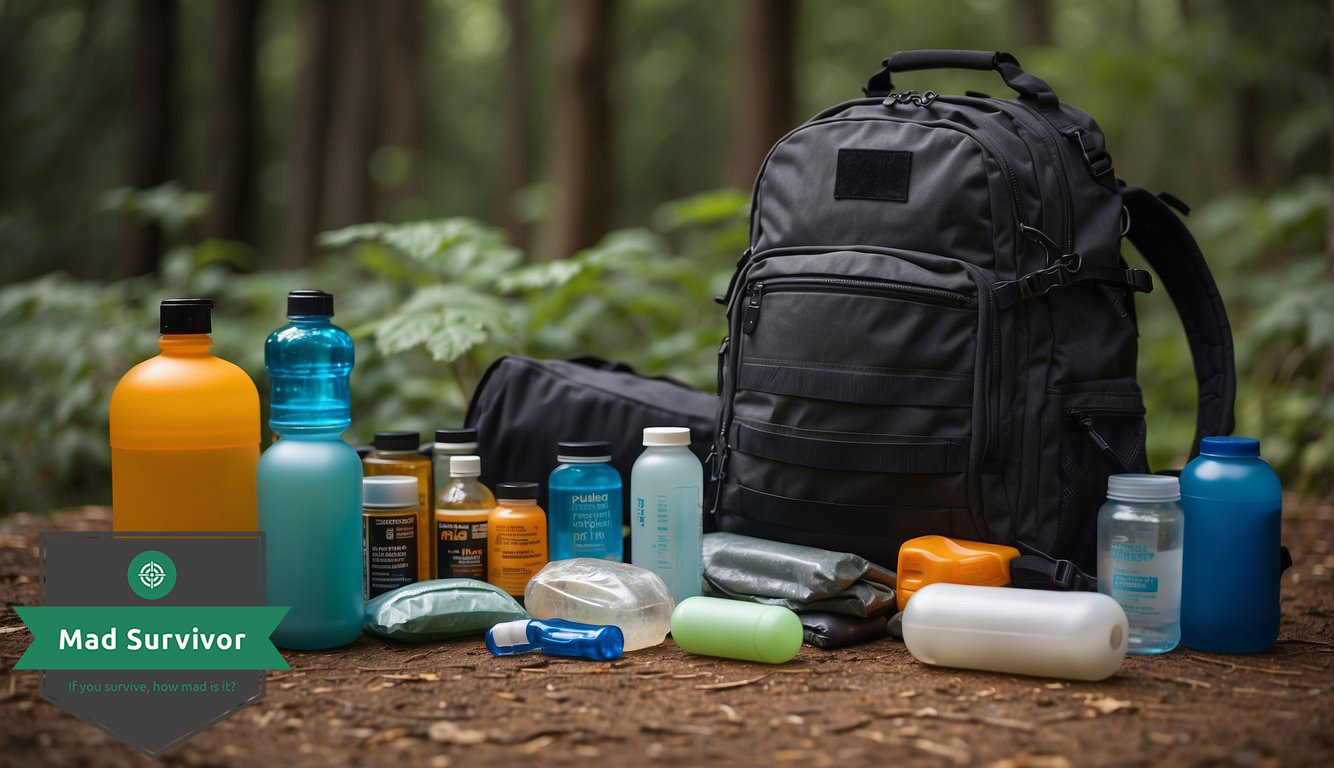
When it comes to emergency preparedness, your bug out bag is your lifeline. But you don’t have to break the bank to pack a practical and reliable kit. Let’s focus on how to select the right items and balance cost with quality.
Selecting the Right Items for Your Bug Out Bag
Essentials: Prioritize basics like water, food, shelter, and warmth. Start with cost-effective options:
- Water: Include a reusable bottle and purification tablets or a small filter.
- Food: Caloric density and shelf-life are key. Go for trail mix, jerky, and energy bars.
- Shelter: A tube tent or tarp can be had for less and they’re light to carry.
- Warmth: Pack an emergency blanket which is both affordable and compact.
Tools: Multi-purpose gear saves money and space. Look for a good knife, a fire-starter, and paracord. These are versatile and can be critical in various situations.
First Aid: Don’t skimp on health. A basic first aid kit is essential and can be bought or assembled inexpensively.
Containers: Opt for a military surplus backpack or any durable, second-hand option that fits your gear comfortably.
Balancing Cost and Quality
Budget-Friendly: It’s tempting to go for the cheapest items, but consider longevity. It’s worth paying a bit more upfront for gear that will last longer and perform better in critical situations.
- Check reviews: Look for items that have positive feedback for both durability and function.
- Second-Hand: Sometimes quality gear is available second-hand, offering premium brands at a fraction of the cost.
Health and Hygiene on a Budget
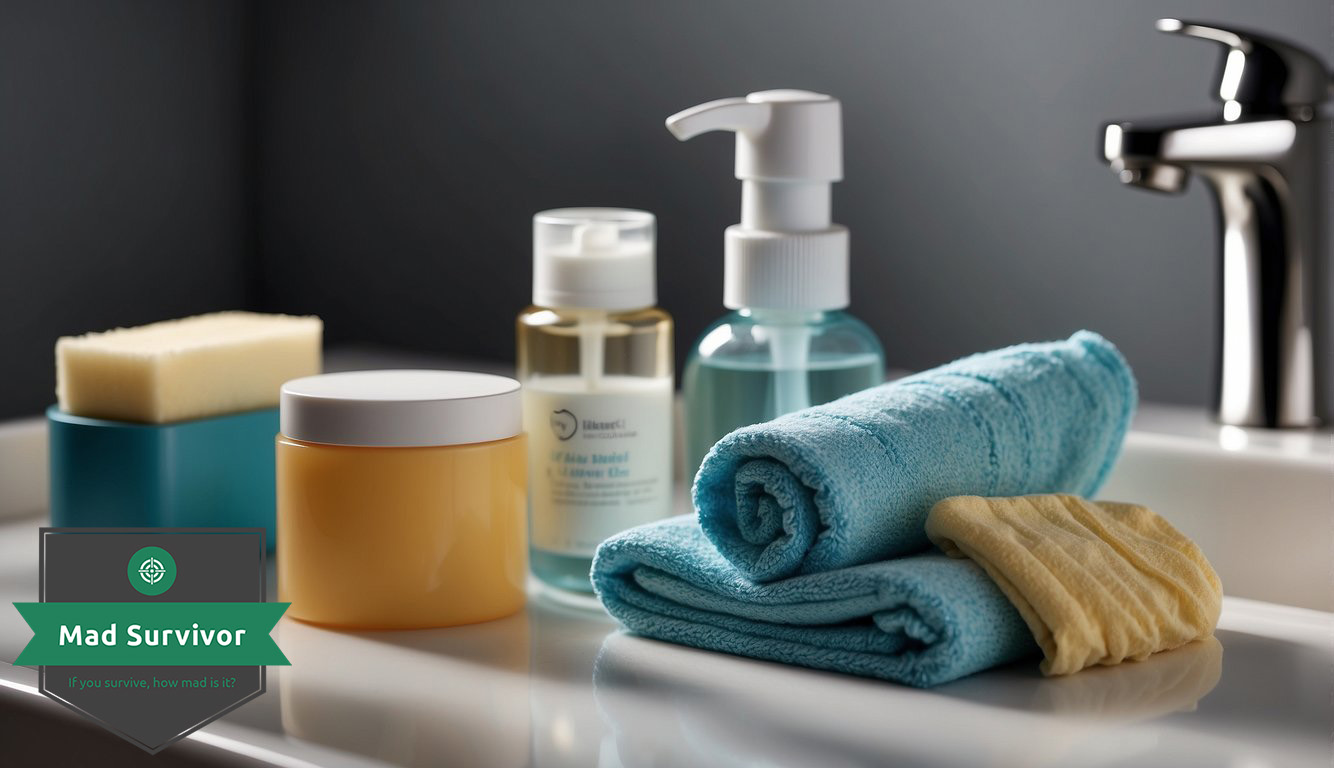
When prepping for emergencies, keeping your health and hygiene in check doesn’t have to drain your wallet. Stock up on essentials and make smart choices to maintain your cleanliness and tackle medical issues with minimal funds.
Stocking Up on Affordable Hygiene Products
Soap and Sanitizer: Start with basics like soap and hand sanitizer. Buy in bulk or during sales to save money. Consider store brands which often have the same ingredients at a lower price.
Tooth Care: Toothbrushes and toothpaste are crucial. Purchase multi-packs for cost savings and keep an eye out for discounts and coupons.
Wet Wipes: Wet wipes are versatile for cleaning when water is scarce. Look for larger packs or generic brands to get more for your money.
Menstrual Products: For menstrual hygiene, reusable products like menstrual cups or cloth pads can offer long-term savings.
Towel/Washcloth: A towel or washcloth is essential. Opt for a microfiber towel which is efficient and dries quickly.
First Aid Essentials
Bandages and Gauze: For cuts and scrapes, stock up on a variety of bandage sizes and gauze. Buying in bulk can lead to savings.
Disinfectants: Antiseptic wipes and hydrogen peroxide are necessary to prevent infections. These are often available at discount stores for less.
Pain Relievers: Pain relievers like ibuprofen or acetaminophen are first aid staples. Go for the generic brands—they contain the same active ingredients at a fraction of the cost.
Allergy Medications: If you’re prone to allergies, having antihistamines on hand is imperative. They are also less expensive in generic form.
Prepping Strategies for Natural Disasters
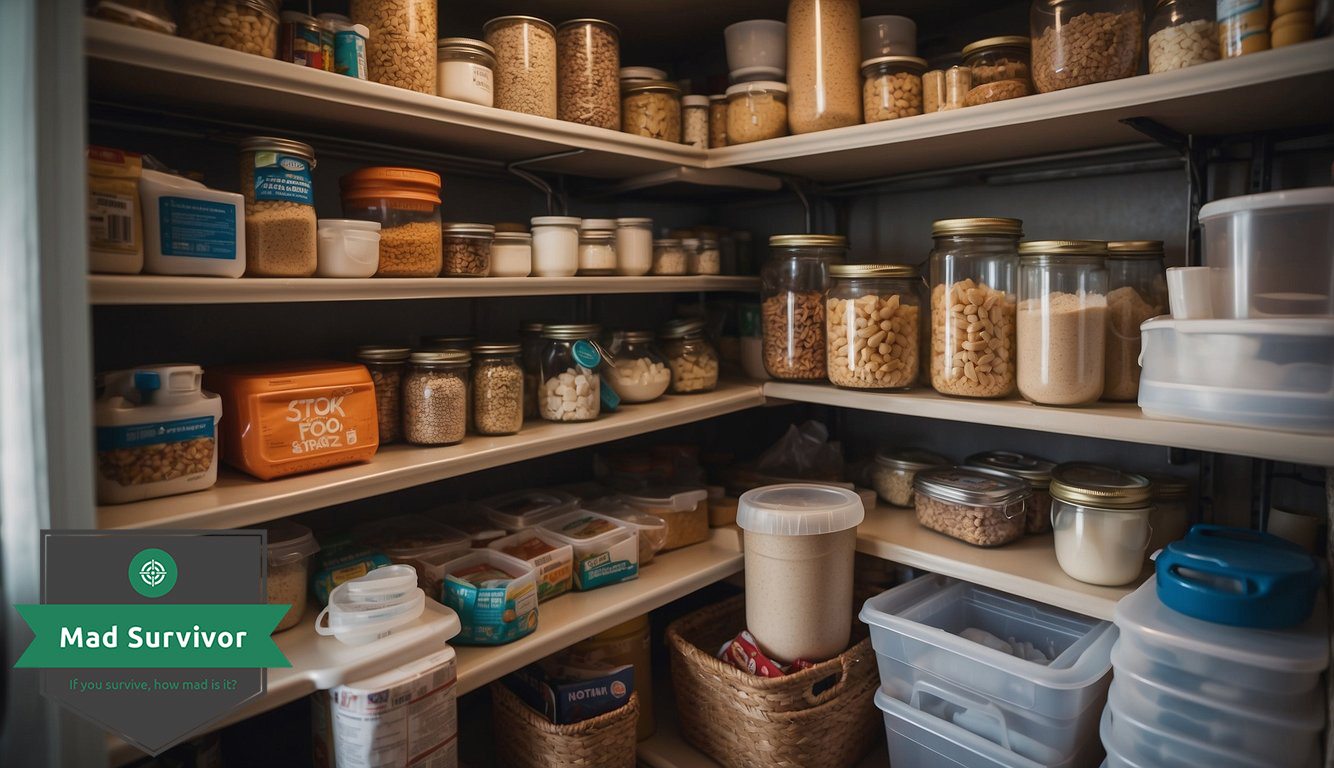
Prepping for natural disasters doesn’t mean overspending. You can effectively prepare for emergencies by focusing on budget-friendly strategies and supplies specific to your risks.
Strategies for Different Disaster Scenarios
Different disasters call for different responses. For a hurricane, you’ll want to reinforce your shelter and ensure you have a stockpile of supplies to last through potential power outages and water shortages. On a budget, start with the essentials like food, water, and first aid, then expand as funds allow.
- Earthquakes might cut off utilities, so plan for alternative shelter options and keep a wrench handy to turn off your gas supply if necessary.
- During a flood, elevate your emergency supplies and important documents. Silicone bags or waterproof containers can protect these items without a hefty price tag.
When you’re preparing for specific scenarios, always consider your immediate needs like shelter, maintaining food and water supplies, and personal safety.
Budgeting for Disaster-Specific Supplies
Creating a budget for your disaster supplies is about smart shopping and prioritizing. Start with a list and tick off items as you find deals:
- Food and Water: Aim for non-perishable items and a safe water supply. Bulk-buy when sales hit or consider cost-effective options like rice and beans.
- Power: A generator might be out of reach but store batteries and portable chargers for essential power.
- Shelter and Warmth: Mylar blankets and tents often go on sale and are vital for keeping warm if your house is damaged.
Economic Prepping: Saving Money Through Skill Building

Enhancing your survival skills and growing your own food are savvy strategies to strengthen your economic prepping. By focusing on these areas, you can save money and become more self-sufficient.
Developing Survival Skills
Survival skills are essential, and the best part is that many of them are free or low-cost to learn. Start with the basics:
- First Aid: Knowing how to treat minor injuries can reduce your dependence on medical supplies.
- DIY Repairs: Learn to fix gear and household items to extend their lifespan.
- Navigation: Get comfortable with maps and compasses to avoid the need for tech-based aids.
By budgeting time to practice these skills, you can save money and increase your resilience in tough times.
Gardening and Food Production
Gardening is a highly affordable way to contribute to your food supply. Start small:
- Plan Your Space: Even a windowsill can support herbs while a balcony can accommodate tomatoes or strawberries.
- Save on Seeds: Purchase in bulk, swap with neighbors, or save seeds from the food you eat.
- Optimize Your Yield: Utilize companion planting and natural pest control to maximize production.
Prepping for Beginners: Getting Started Without Overspending
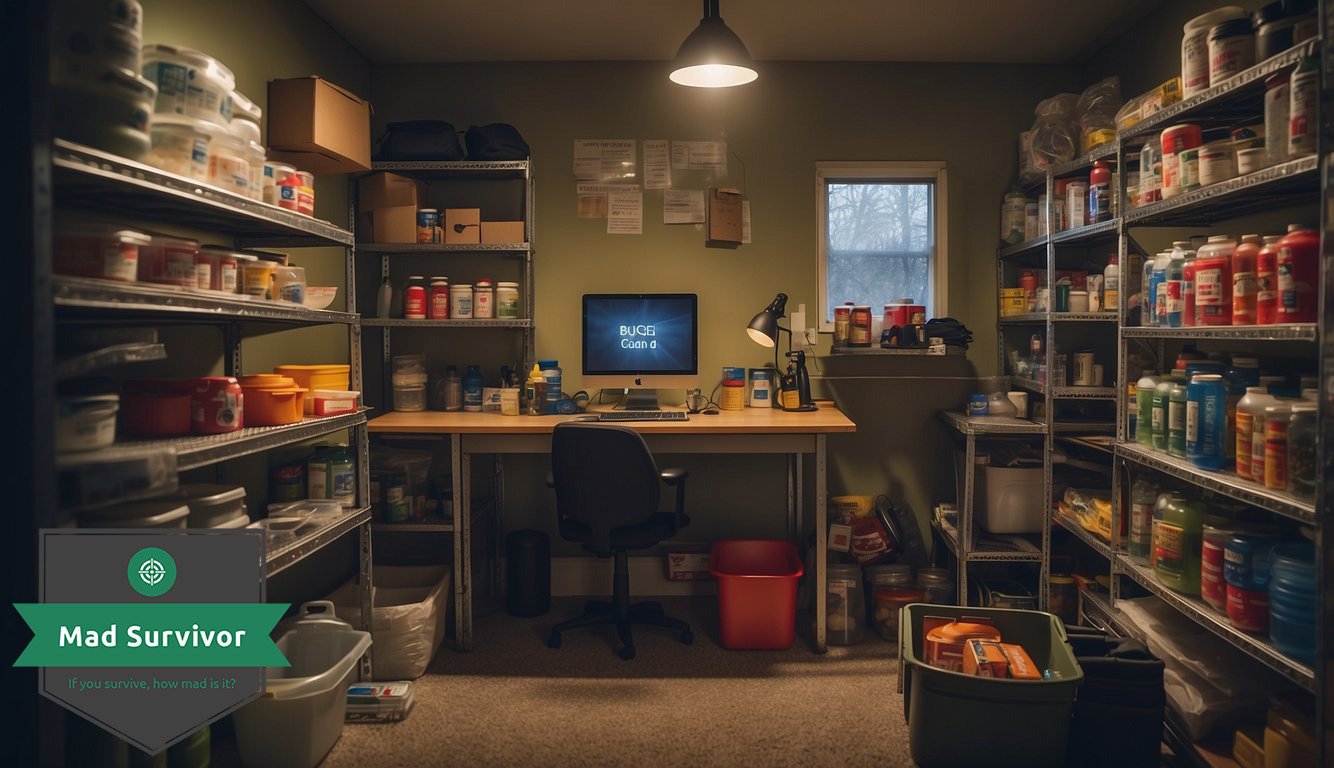
Embarking on your prepping journey doesn’t have to break the bank. With careful planning and smart purchasing, you can prepare for unforeseen events efficiently and economically.
Navigating Challenges and Avoiding Common Mistakes
Common Challenges:
- Overspending: It’s easy to get caught up in buying high-end gear.
- Impulse Buys: Avoid purchasing items you don’t need just because they’re on sale.
- Brand Confusion: Don’t assume expensive brands are the best choice for beginners.
How to Overcome:
- Set a Strict Budget: Know your limits and stick to them.
- Prioritize Needs: Basics like water, food, and shelter come first.
- Do Your Homework: Research products thoroughly before buying.
- Start Small: Focus on small, essential items that you can purchase weekly.
Finding the Right Prepping Supplies
When selecting supplies, it’s crucial you balance cost with necessity. Here’s how to pinpoint the essentials that give you the most bang for your buck:
Essential Prepping Supplies:
| Supply Category | Examples | Tips |
|---|---|---|
| Water | Water filters | Bulk purchases can save money in the long run. |
| Food | Canned goods | Look for sales and buy in bulk when possible. |
| Gear | Multi-tools | Opt for versatility and durability over high price tags. |
| Shelter | Tarps | Basic is often enough in emergency situations, so keep it simple. |
- Focus on versatility and durability rather than brand names.
- Consider second-hand items when appropriate.
- Keep an eye out for sales and discounts, but confirm the utility and necessity of the item first.
- Expand your prepping supplies systematically, investing in quality items over time rather than all at once.
Prepper Communities and Support

When you’re looking to stretch your prepping budget, becoming a part of prepper communities and tapping into support networks can be a game-changer. They’re a hub for sharing knowledge and resources which can help you prepare without breaking the bank.
Engaging with Prepper Groups Online and Offline
Joining local prepper groups is like tapping into a brain trust; you get access to a wealth of information from experienced preppers. It’s not just about being ready for emergencies, but also about building relationships that can prove invaluable in times of need. You can find these groups through online forums, social media platforms, or local community boards.
- Online: Look for Facebook groups, forums, or subreddits where preppers congregate.
- Offline: Attend meetups, workshops, or local events to connect in person.
Exchanging Tips and Resources
In prepper communities, there’s a culture of sharing tips and resources that can help you be more efficient with your budget. Members often exchange goods and offer suggestions on affordable prepping essentials.
- Tips: Experienced preppers can provide you with cost-effective strategies.
- Resources: Sometimes, group members may trade items, cutting down costs.
Frequently Asked Questions
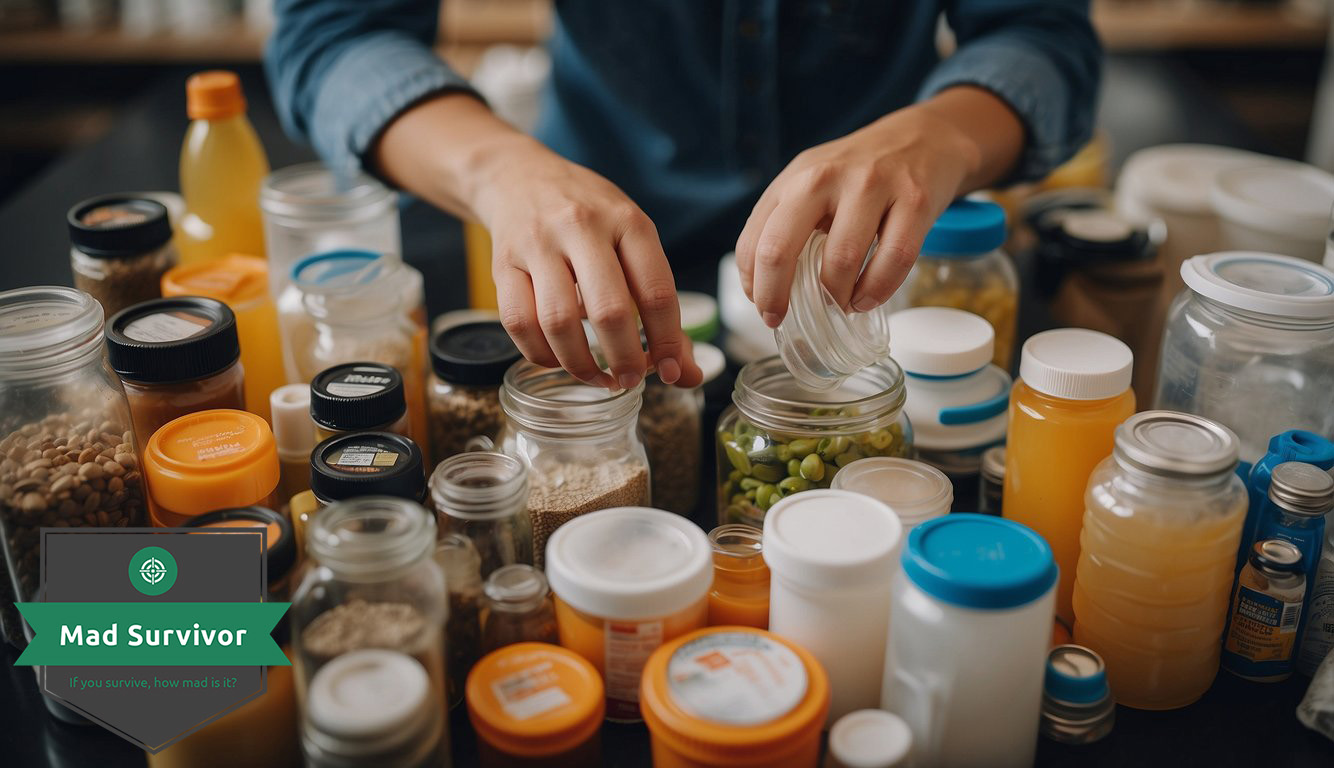
When it comes to prepping on a budget, you’ve got questions, and we’ve got answers. From the basics to the nitty-gritty, let’s dive into your most pressing queries.
What are the most essential items to start with for budget-conscious preppers?
Start with water purification tools, non-perishable food items, a reliable flashlight, a multi-tool, and a first-aid kit. These essentials cover your primary needs without breaking the bank.
Can you suggest ways to save money while building an emergency food supply?
Buy in bulk, focus on staples like rice, beans, and canned goods, and take advantage of sales and coupons. Consider dehydrating or canning your own food as a cost-cutting measure.
How can I prioritize my spending when preparing on a tight budget?
Focus on the rule of threes: prioritize items that support three minutes without air, three hours in harsh conditions, three days without water, and three weeks without food.
What are some cost-effective strategies for water storage and purification?
You can store water in cleaned soda bottles or invest in large, stackable containers during sales. For purification, bleach is affordable and effective, and boiling water is a no-cost method.
Where can I find affordable gear and supplies for emergency preparedness?
Look for second-hand stores, military surplus outlets, and online marketplaces for deals on used or discounted gear. Also, consider group buys with friends or community members to save.
Is it possible to DIY some prepping necessities to cut costs?
Absolutely. Many prepping items can be made with everyday household materials and a bit of ingenuity. You can create your own first aid supplies and assemble homemade fire starters.

Leave a Reply